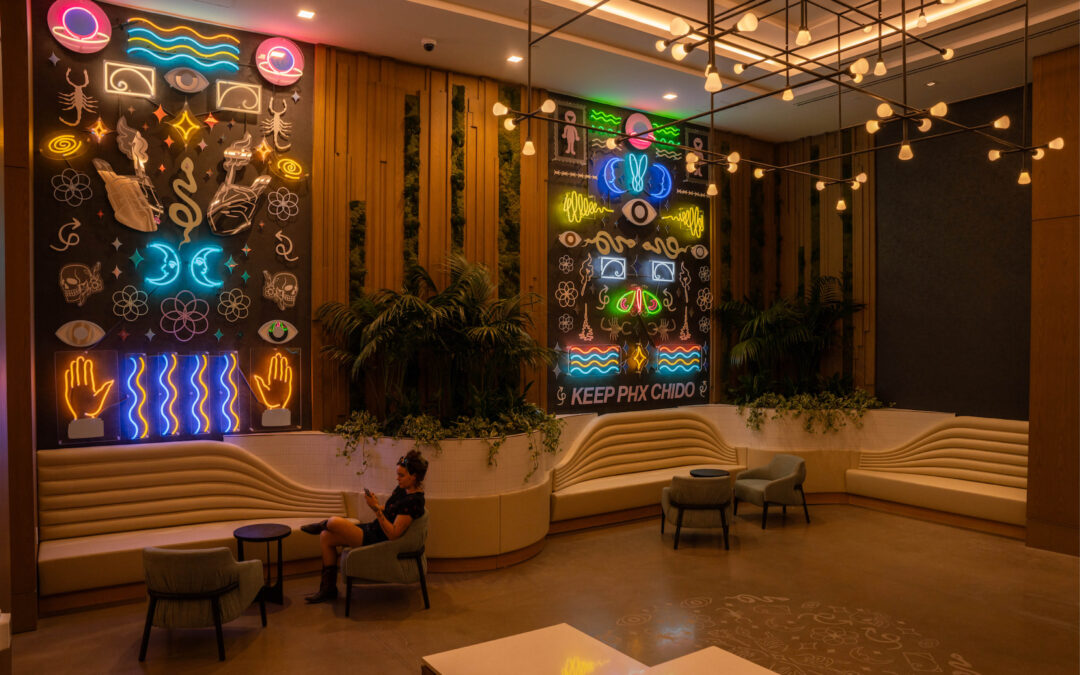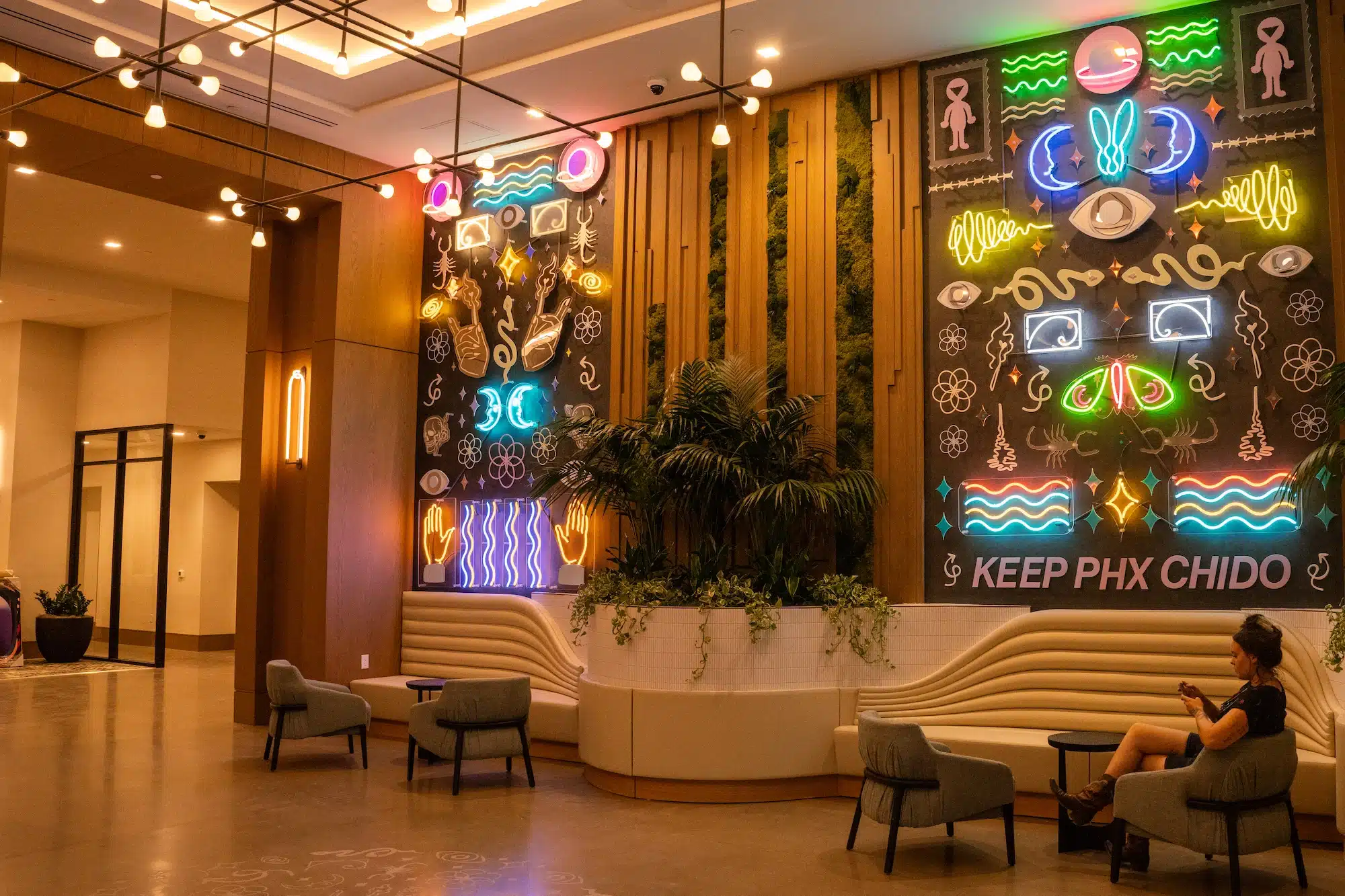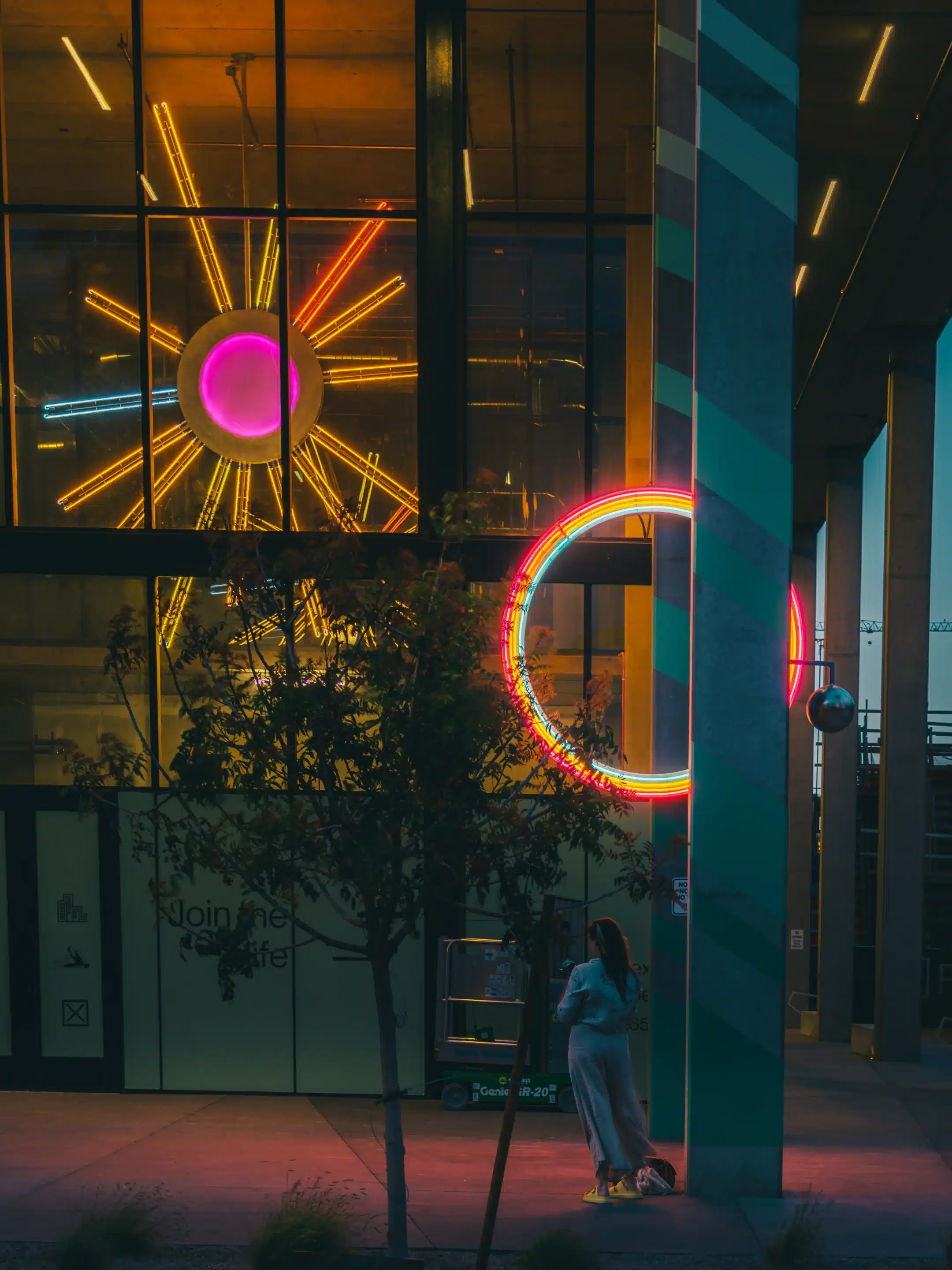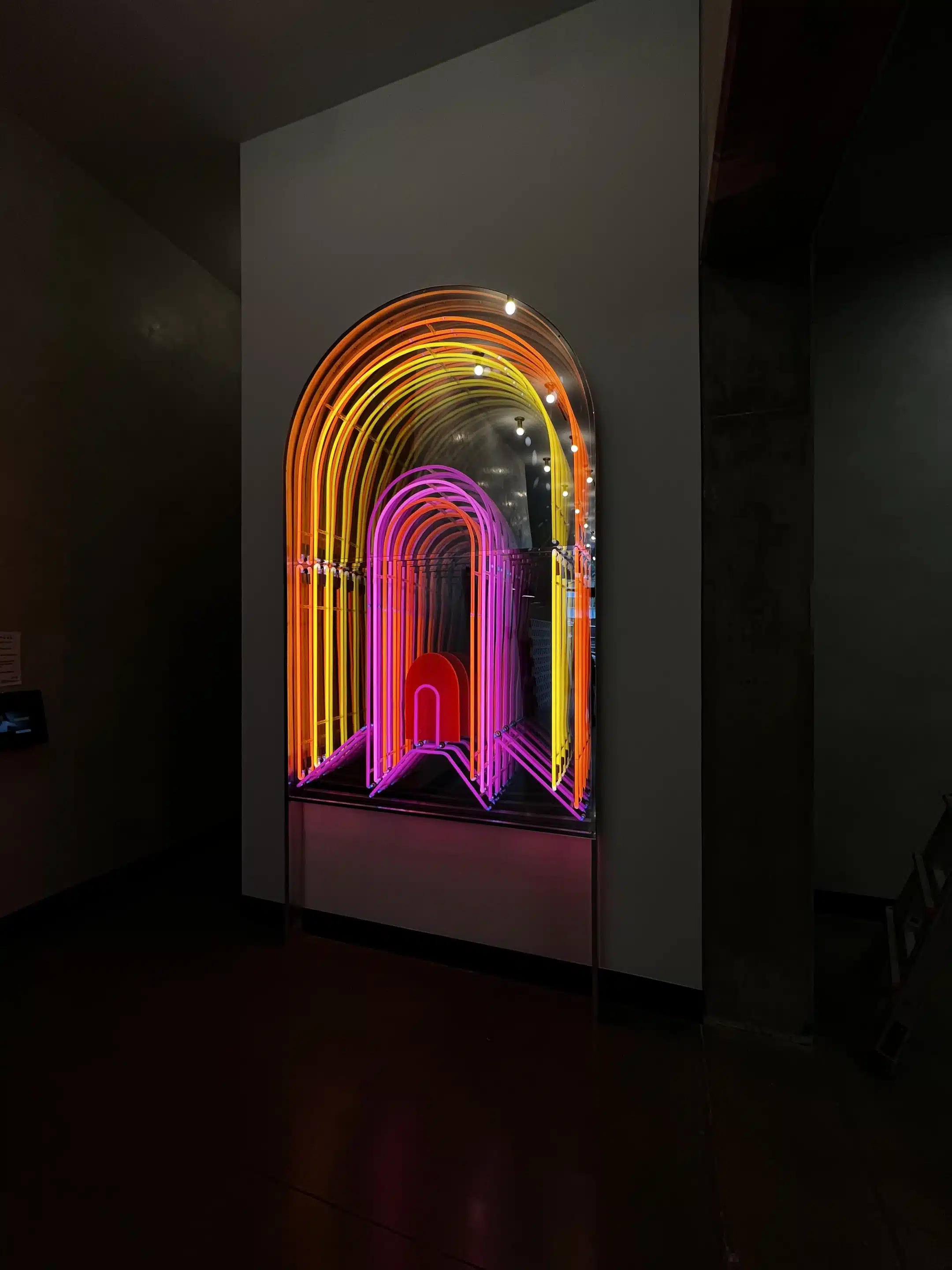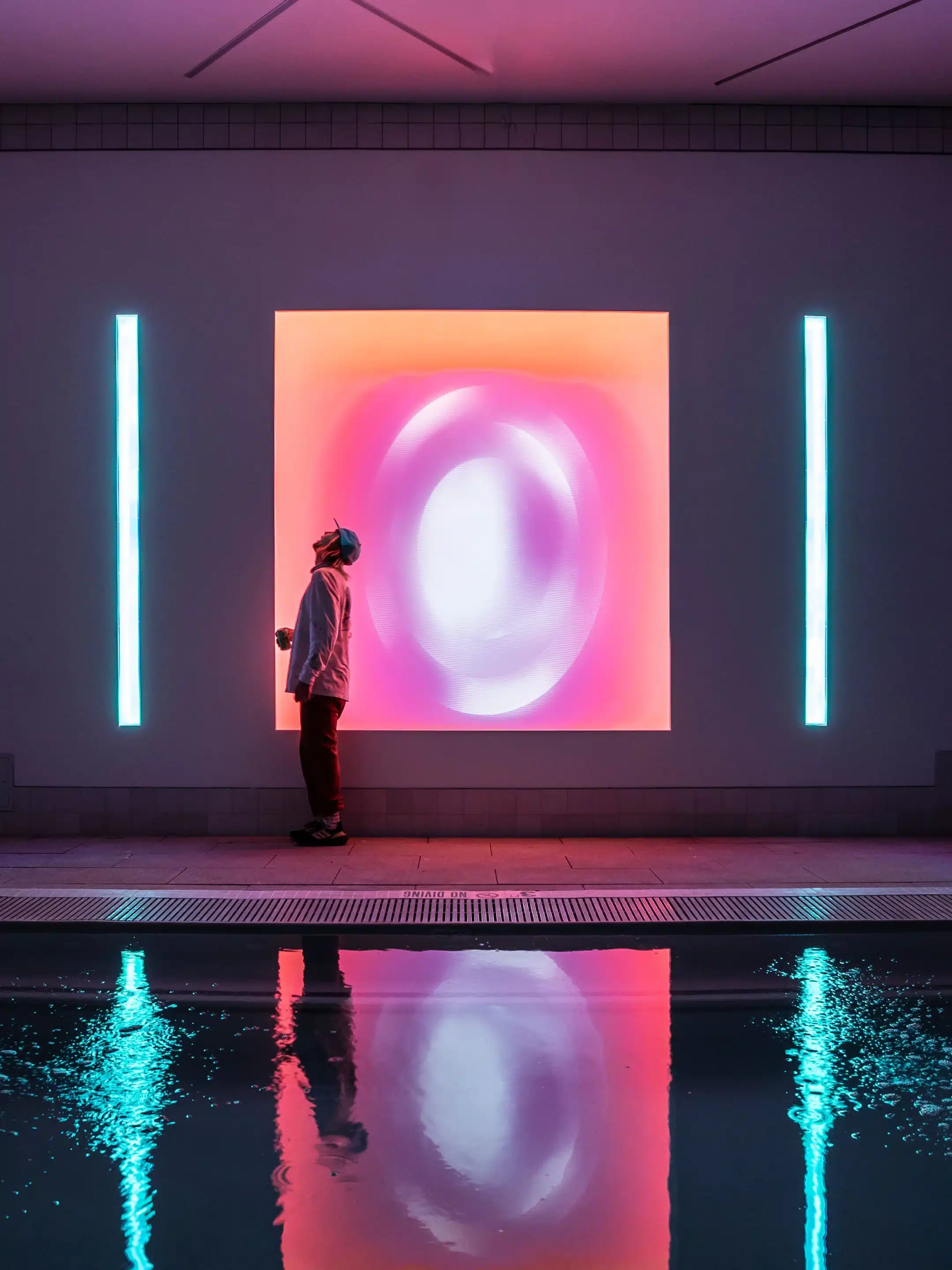Beyond the Blueprint: Murals in Architecture
by Omar Bailey, AIA, LEED AP, NOMA
Art has a transformative power over people and places. Within architecture, murals are more than decorative additions. They’re powerful tools for storytelling, placemaking, and cultural identity. I sat down with artist Lily Reeves after she completed her latest piece at Saiya to unpack how murals are finding new canvases in our growing cities.

Artist Lily Reeves. Photo courtesy of Lily Reeves.

Trinity Church, Boston, MA. Photo © Shepley Bulfinch.
Architectural Storytellers
Historically, murals have played a central role in telling the story of a design. One of the world’s oldest art forms, examples can be found from prehistoric times to modern art movements. As religious leaders recognized the power of art, it often became tied to spiritual narratives. In ancient Egypt, murals were painted in tombs to guide the journey into the afterlife. In more modern times, the iconic Boston landmark, Trinity Church, was designed as “a church of color.” Firm founder H.H. Richardson partnered with painter John La Farge to create a decorative interior scheme. Featuring Richardson’s favorite Pompeiian red, gold, blue, and green colors, La Farge created murals depicting positive images of faith and mission, a distinct departure from typical worship imagery at the time, gloomy depictions of the last judgement or the crucifixion.
This tradition of integrating murals into architecture continues today, albeit with new materials, styles, and cultural contexts.
The Identity of Place
In Phoenix, artists like Lily are redefining how murals interact with contemporary architecture to go beyond aesthetic enhancements and become cultural signifiers. The city has instituted public art initiatives such as the 1% for Art program, ensuring that murals are part of the urban development process. Lily emphasizes that “art drives the cultural landscape… and gives a place an identity.” Murals make art accessible, foster pride, and create spaces people want to inhabit.
Lily’s portfolio includes work across the country. Photos courtesy of Lily Reeves.
The Artist’s Process: Collaboration and Vision
Lily, whose studio is one of a small number of UL-listed neon art studios, incorporates light as a medium. Designed in collaboration with Chicago artist Michelle Meyer, the piece involved complex coordination, power testing, and material experimentation. “We wanted to reflect the natural elements of the space — wood, stone, greenery — while keeping it vibrant and warm,” she explains. Her work demonstrates how murals can be both technically sophisticated and emotionally resonant. The end result is immersive, transforming the interiors with color and atmosphere. “Light has an immense power over a space,” she explains. “It’s the jewelry of the room.”
Why Murals Matter: Then and Now
From La Farge’s inspiring church of color to the vibrant walls of Phoenix’s Roosevelt Row, murals have always been about more than decoration. They are expressions of identity, memory, and imagination. They make architecture human.
As Lily puts it, “Murals give people pride and ownership in their city… they increase the vitality of a place.” They invite us to look closer and connect more fully with the spaces we inhabit. Whether through pigment or light, murals continue to shape the built environment in ways that are both timeless and innovative.
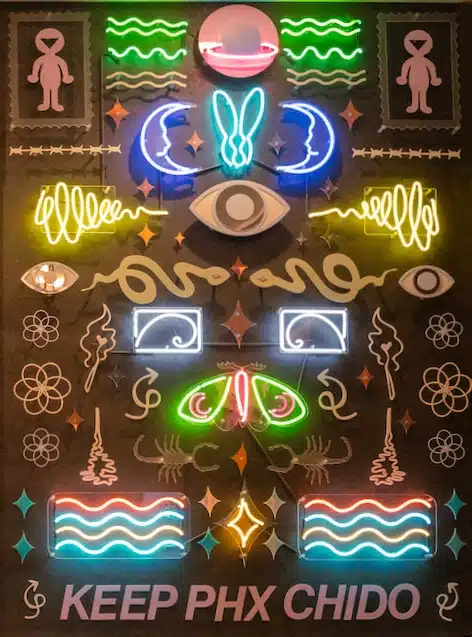
Good Luck!! Charm Mural at Saiya, Phoenix, AZ. Photo courtesy of Lily Reeves.

Omar Bailey, AIA, LEED AP, NOMA
Senior Architect, Associate
In 23 years of architectural practice, Omar’s focus on community impact has been instrumental in conversations with developers.



